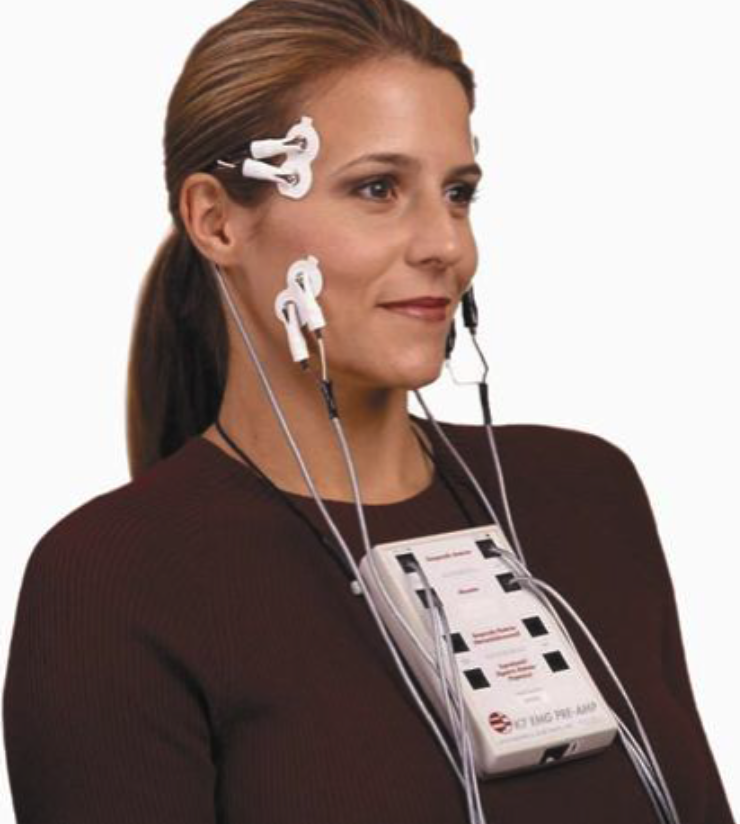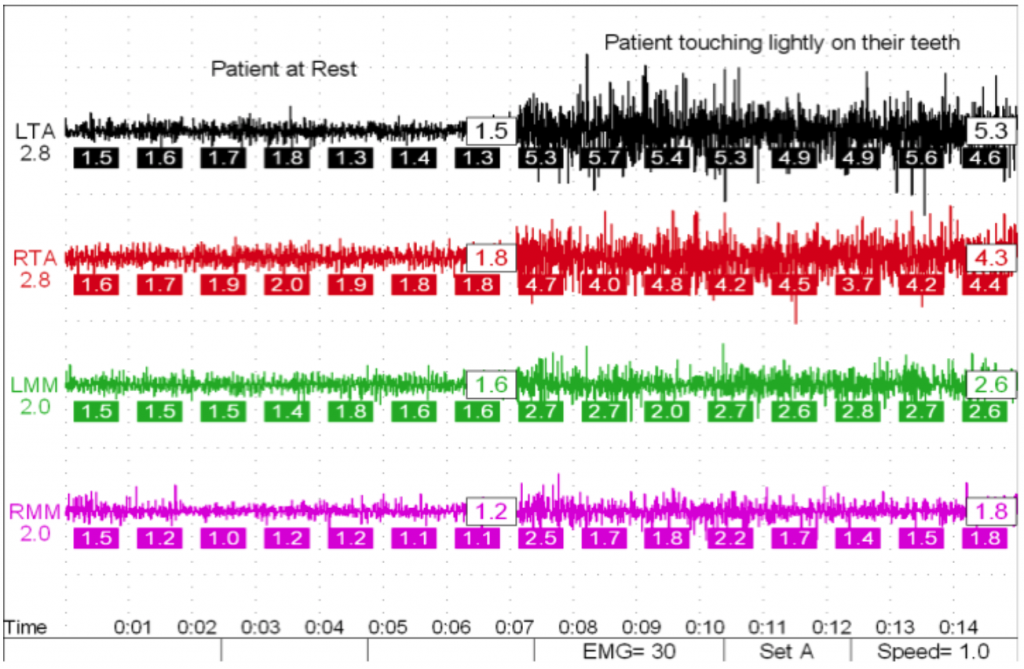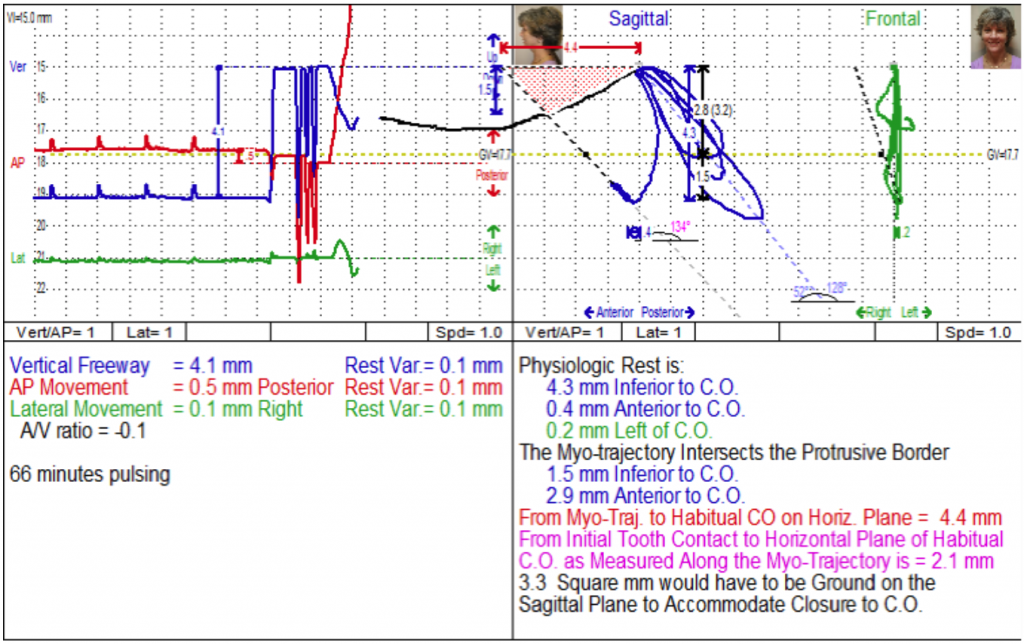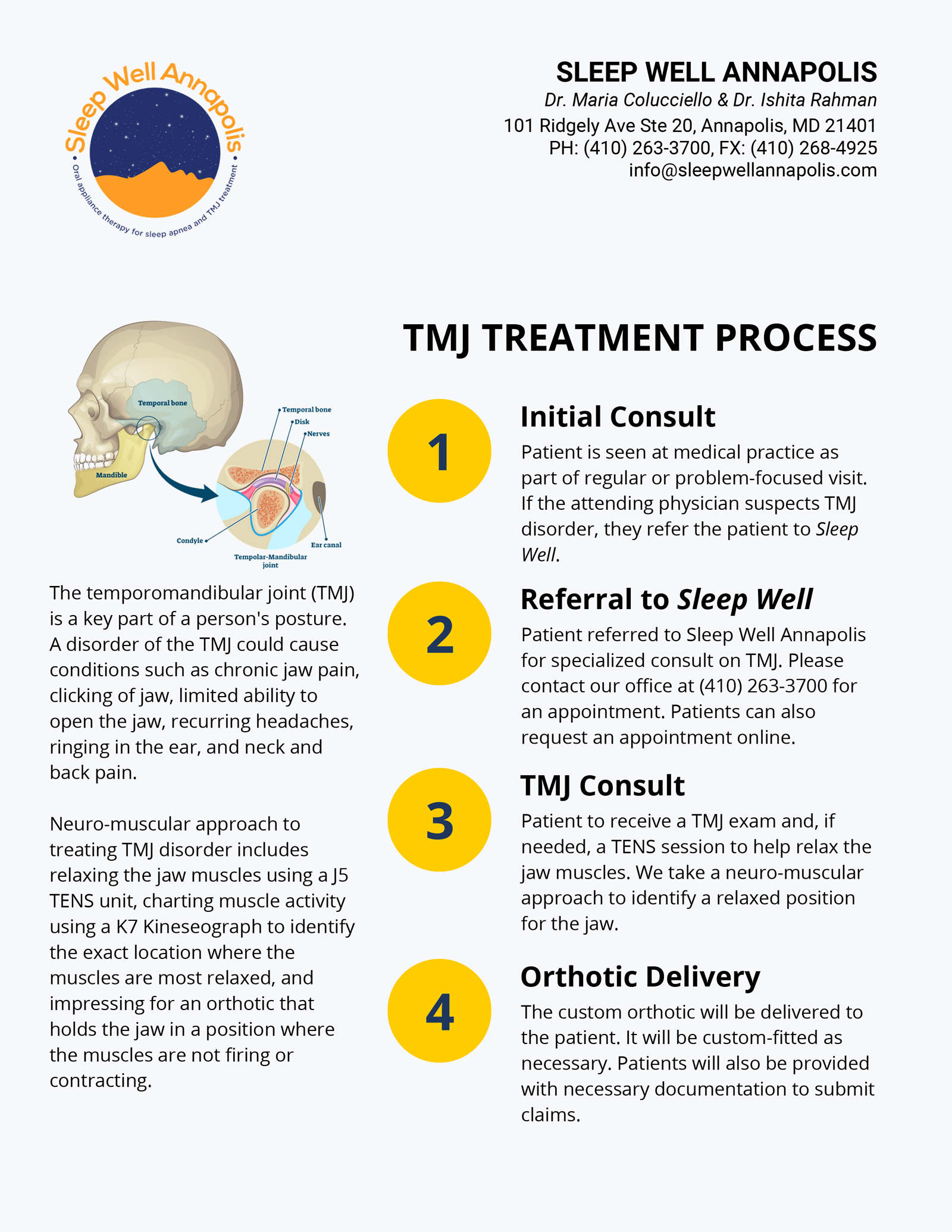
TMJ Disorder Annapolis, MD
Treatment for temporomandibular joint dysfunction.
Dysfunction of the Temporomandibular Joint (TMJ) is referred to as TMD (temporomandibular dysfunction). TMD is a disorder of one or both of the two small joints in front of your ears that control the movement of your jaw. When either of these joints is out of alignment, chronic jaw popping, clicking, and pain will often result.
TMJ pain or TMD is often associated with problems with malalignment of the teeth and bite. TMJ can also stem from other causes and then lead to issues with the bite, the teeth, and the gums (such as sleep apnea or sleep disordered bruxism). The temporomandibular joint is very complex, and a large number of muscles, ligaments, and bones are involved in its function. Therefore, TMJ problems are also implicated in a variety of spinal and muscular disorders throughout the body.
Throughout the American dental community, interdisciplinary dentists agree that TMJ issues are more common and far-reaching than most people realize. In fact, one in every four Americans has a TMJ disorder (TMD).
Besides jaw popping and clicking, other symptoms of TMD include:
- Limited range of motion of the jaw
- Pain when chewing
- Chronic migraines
- Teeth clenching or grinding (bruxism)
- Sensitive teeth
- Inflammation and/or pain in the jaw or cheeks
- Bite malalignment
- Earaches
- Ear ringing or tinnitus
- Difficulty swallowing
- Vertigo
- Chronically tired, sore neck muscles
- Pain and tingling in the fingers
- Snoring and sleep apnea
- Loss of balance
- Facial asymmetry
- Throat pain
- Dizziness
- Pressure behind the eyes
Causes of TMJ Issues
What causes TMD? These joints are extremely sensitive to external stimuli. Clenching or grinding of the teeth can cause TMD, as can improper bite position as a result of injury, crooked teeth, or improperly done orthodontics. Arthritis and other diseases can be potential causes, as well as posture, spine, or neck issues.
TMJ Treatments
We routinely treat TMJ disorders with non-surgical, non-invasive, oral appliance therapy. This usually involves customized orthotics so that the muscles, bones, and teeth can function in a more neurologically correct manner.
Our treatment philosophy is intended to produce a balanced bite. We utilize several computerized instruments to measure your jaw movements and jaw muscle activity to determine the extent of your problem and to establish a “physiologic rest position” for the jaw. Here are some of the measurement techniques and procedures used:
- Jaw Tracking (Electrognathograph, Kinesiography) – Analyzes mandibular movements three dimensionally. A headset is placed on the patient and a magnet is attached to the lower front teeth. Recording of the lower jaw movement is then made.
- TENS – Ultra-low frequency electrical stimulation of the muscles to relieve muscle spasms and pain and help establish a “physiologic” jaw position.
We will customize a treatment plan for you based on the specifics of your case. As always, our philosophy is holistic in nature and looks at all of the potential causes and contributory influences of TMD.

Patient being prepared for jaw tracking.

Muscle activity tracking.

Bite registration at the physiologic rest position.

